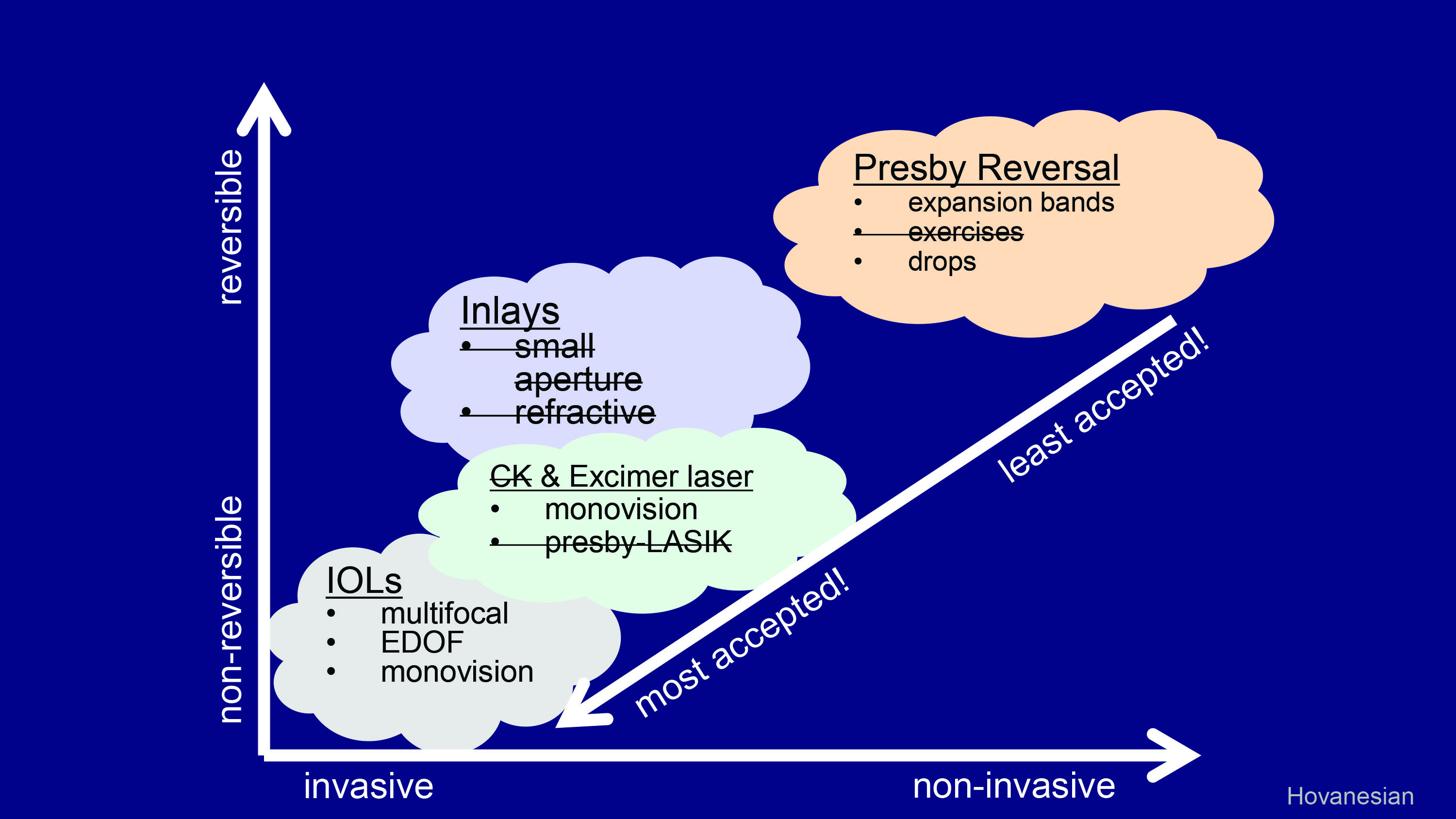BLOG: If Santa brought us a presbyopia treatment
I’ve said it before: There are four stages of life. First, you believe in Santa Claus. Next, you stop believing in Santa Claus. Next, you are Santa Claus, and finally, you begin to look like Santa Claus.
Those of us in stage 3 or 4 know the challenges of presbyopia in a very personal way. Unfortunately, we don’t yet have a perfect treatment for this condition, and looking across the landscape of available options, we are often forced to choose between some form of monovision or some form of imperfect optics.

Let’s compare our options against what most people want. Take a look at the accompanying chart, where I have plotted treatments according to their invasiveness and reversibility.
In this construct, presbyopia drops, which are both reversible and noninvasive, would rank toward the top right in the most desirable position. Nearby would be effort-dependent exercises for presbyopia and scleral expansion bands. Moving toward the less desirable position of greater invasiveness and nonreversibility are corneal inlays (both small aperture and refractive). Still closer to the origin of the graph are conductive keratoplasty and excimer laser procedures for monovision and multifocal ablations (presbyLASIK). Finally, in the least desirable position (most invasive and nonreversible) are all the IOLs, including multifocal, extended depth of focus and those to achieve monovision.
Here’s where it gets interesting. If we plotted a “third axis” showing the acceptance (by the public and doctors) of each of these treatments, it would run diagonally, favoring the IOLs as most accepted and the presbyopia drops as least. In other words, the treatments that are most desirable from the standpoint of invasiveness and reversibility are the least accepted by us doctors and our patients.
To put it another way, it also turns out that the least trusted options are those that we apply to younger presbyopes — those who act like Santa Claus — and the most trusted are applied to older patients — those who are beginning to look like Santa Claus.
Furthermore, many of our options have fallen out of favor entirely or are unavailable, like scleral expansion bands, accommodative exercises, corneal inlays, CK and multifocal excimer ablations. That’s a pretty full dustbin. Not much is left besides drops, monovision LASIK and lens implants.

To be fair to the non-IOL options toward the upper right, they have been primarily tested and used on our fussiest customers — young plano presbyopes — in whom we hesitate to use IOLs for good reason. And the public has tested only one product outside of clinical trials, Vuity (pilocarpine hydrochloride ophthalmic solution 1.25%, Allergan), which showed promise but may be surpassed by the many fast followers now making their way through FDA registration.
What I’d like Santa to bring this year is a safe, fully reversible and noninvasive treatment that gives binocularity and excellent visual quality.
Hey, what’s that box under the tree from ReadingGlasses.com?
Collapse
